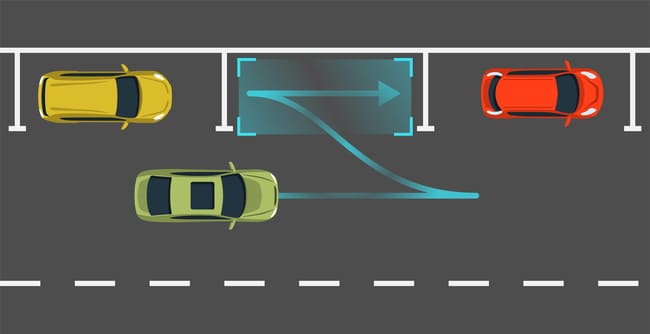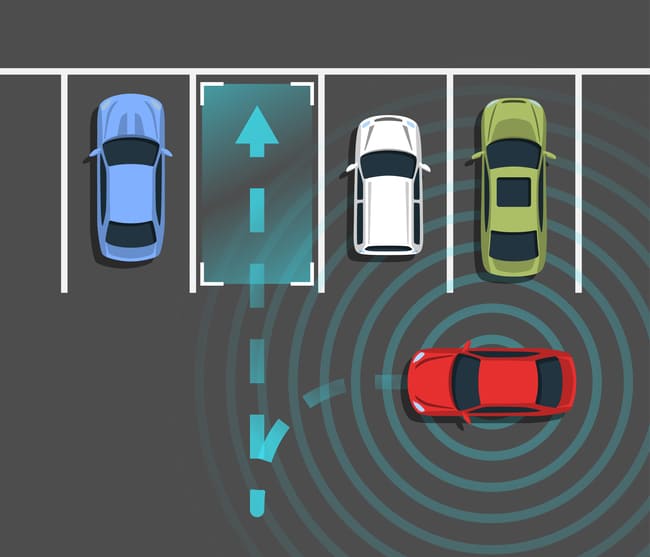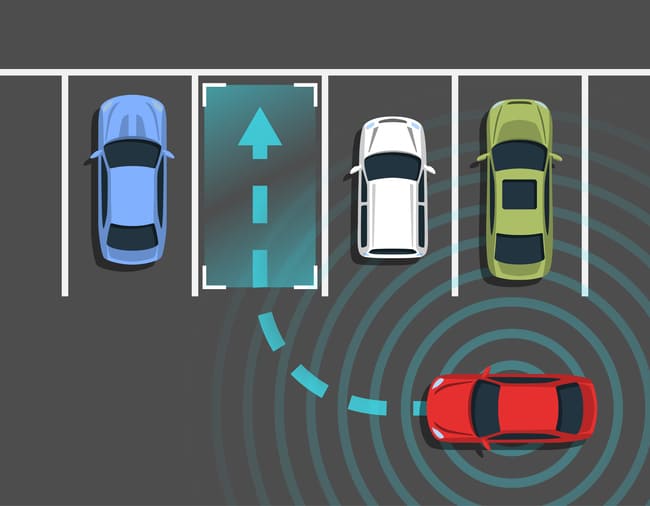
Driving a car is one thing – but parking correctly is a supreme discipline. Many novice drivers wonder how to properly learn how to park and later we all focus on the parking spots where we can park comfortably. However, there is a formula for reverse parking, for example. In this article we give you lots of tips about parking, so that in future you can say: backwards, forwards, sideways or parallel – it doesn't matter!
Contents
What preparations you should do to be able to park correctly at the destination

First of all, you should make sure that you can use all your mirrors effectively. When doing this, using the left outside mirror, you should be able to see the rear door handle in the lower right portion of the mirror. On the other hand, the same applies to the right-hand exterior mirror (only reversed). This means that in this one you should see the rear door handle in the lower left part. On the other hand, you should be able to see your entire rear window via the interior mirror.
In order to be able to better estimate the size of the parking space (especially when parking parallel to the street), it is advisable to stop exactly at the level of the parking space. This way you can see directly whether it is even possible to park there or whether the space is simply too small for your car. In general, however, it can be said that it is easier to park a car backwards.
Take a little more time for the parking process. Stress in such situations only leads to unnecessary mistakes. Therefore, you should try to give yourself some rest while practicing. So we don't think it's a good idea to do the first attempts in the car in full rush hour traffic and with screaming children. A passenger who talks into you can also be annoying. In general, parking a car is not difficult, but the drivers often have far too many complicated thoughts.
Parking the car backwards
Many will now wonder why we start reverse parking; however, it is actually the simpler variant. This is primarily due to the fact that your rear wheels are not steered and therefore have a tighter turning circle when steering. Therefore, in most cases, parking spaces parallel to the road can only be parked backwards. This applies in particular if they are rather short.
Park laterally backwards (parallel to the road)

First, turn right and drive past the parking space. The most important requirement in this case is that, after driving past the side gap, you stop next to the vehicle that is in front of the parking space. The lateral distance between your vehicle and the other vehicle should be rather small (about 50 cm). This makes parking easier for you. The exterior mirrors of both cars are about the same height. You now slowly start backing up so that the taillights of the other car are level with the passenger seat belt (the B-pillar). At this point, turn your steering wheel fully to the right. Then continue driving until the rear lights are level with your passenger door handle (inside). Your car is now at an angle of about 45°to the curb. Now, while continuing to reverse slowly, turn completely to the left. As soon as you are in the parking space, straighten your wheels and drive far enough forward so that you can easily park all other vehicles out of our parking space.
Park diagonally backwards

The point here is that Park the vehicle in a parking space that is perpendicular to the roadway. A larger distance is recommended here (about 2meters) to the vehicle already standing to the left of the parking space. We advise you to signal to the right and then drive up to the point where you, as the driver, are about level with the next but one parking space. Then reverse and once the car is in full view next to the parking space in your rear side window, turn all the way to the right. You can use the right-hand side mirror to monitor the distance to this vehicle, while a little later you will also see the second vehicle on the other side of the parking space. The distance can also be observed in the side mirror. You straighten your wheels as soon as the distances are right and your car is straight to the parking space. Now all you have to do is reverse enough to come to a proper stop in the gap.
Park forward

You can't always reverse into a parking space, and it doesn't always make sense to do so. It is only advisable to drive backwards when parking sideways, otherwise you will need a lot of space to park. If you want to park forward across the lane, for example because you can get to the trunk better that way, you should swing out far enough and use as much of the available space as possible. When parking sideways (parking parallel), you should only try to drive in forwards if there is an extremely long gap anyway.
Conclusion
You've learned today how you can park easier or even better in the future. In the future it will no longer matter where the free parking space is located next to your car. You can reach it in no time at all, which will make your search for a parking space much easier. But of course no master has fallen from the sky, so you should not give up if you have initial difficulties, but just keep practicing. Then it will also work with perfect parking, because we firmly believe that everyone can learn how to park correctly.
A tip from CarTipsandmore:
Get on in between off if you are not sure exactly where your car is or how much space is left in which direction. In this way you learn to better assess the local conditions from the vehicle and can continuously improve.
